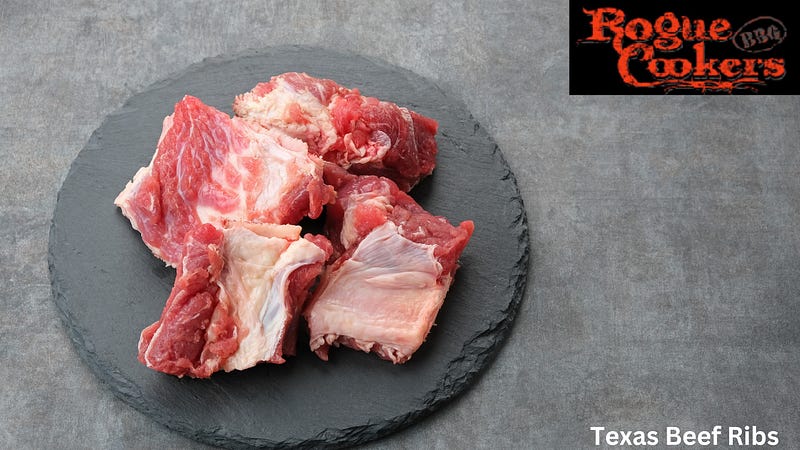Delicious Texas Beef Ribs and Brisket Experience
When it comes to barbecue, few places on Earth can rival Texas. The Lone Star State is synonymous with slow-smoked meats, tangy sauces, and a rich heritage that has perfected the art of BBQ over generations. At the heart of this tradition are two stars of the Texas BBQ scene: Texas Beef Ribs and Texas brisket. This blog will take you on a flavorful journey through the world of Texas beef ribs and brisket, highlighting what makes them so special and providing tips on how to achieve that authentic Texas taste at home.

The Tradition of Texas BBQ
Texas barbecue is a proud culinary tradition rooted in simplicity and respect for quality ingredients. Unlike other regional BBQ styles that rely heavily on sauces and marinades, Texas BBQ is all about the meat. The primary focus is on slow-smoking over wood, typically oak or mesquite, to impart a deep, smoky flavor.
Beef ribs and brisket are particularly revered in Texas. These cuts of meat require patience and skill to prepare properly, but the result is well worth the effort. A perfect Texas BBQ experience showcases the natural flavors of the meat, enhanced by smoke and a carefully crafted rub.
The Majesty of Texas Beef Ribs
Texas Beef Ribs are a centerpiece of Texas BBQ, known for their rich, beefy flavor and impressive size. Often referred to as “dino ribs” due to their massive bones, they are a sight to behold and a delight to eat.

Selecting the Right Beef Ribs
When choosing beef ribs, look for ribs with a good amount of meat on the bones and a nice marbling of fat. This fat is essential for keeping the meat tender and flavorful during the long smoking process. There are two principal kinds of hamburger ribs: short ribs and back ribs. Short ribs are meatier and more commonly used in Texas BBQ, while back ribs have less meat but are still delicious when prepared correctly.
Preparing and Smoking Beef Ribs
Rub: Start with a simple rub. Traditional Texas BBQ rubs are minimalist, usually a mix of coarse salt and black pepper. Some pitmasters add a bit of garlic powder, paprika, or chili powder for extra flavor.
Smoking: Smoke the ribs low and slow at around 225°F. Use oak or mesquite wood for an authentic Texas flavor. Place the ribs bone-side down on the smoker to ensure even cooking.
Cooking Time: Beef ribs can take anywhere from 6 to 8 hours to cook, depending on their size. You’ll know they’re done when the meat is tender and easily pulls away from the bone.
Resting: Allow the ribs to rest for at least 30 minutes after removing them from the smoker. This aids in the redistribution of the juices, resulting in a flavorful and moist bite.
The Art of Texas Brisket
Brisket is the crown jewel of Texas BBQ. This large cut from the lower chest of the cow is known for its rich, beefy flavor and melt-in-your-mouth texture when cooked properly.
Choosing the Perfect Brisket
Look for a whole packer brisket, which includes both the flat and point cuts. The level is less fatty, while the point is fattier and more tasty. A good brisket should have a thick layer of fat on one side, known as the fat cap, which helps keep the meat moist during cooking.
Preparing and Smoking Brisket
Trimming: To get rid of any extra fat, trim the brisket, leaving about a 1/4-inch layer of fat on top.
Rub: Like beef ribs, a simple rub of coarse salt and black pepper is all you need. Some pitmasters add garlic powder, onion powder, or paprika for additional flavor.
Smoking: Smoke the brisket at 225°F, using oak or mesquite wood. Place the brisket fat-side up so the fat can render down through the meat, keeping it moist and flavorful.
Cooking Time: Brisket can take anywhere from 10 to 16 hours to cook, depending on its size. The key is to cook it until it reaches an internal temperature of about 195°F to 205°F.
Wrapping: Some pitmasters envelop the brisket by butcher paper or aluminum foil halfway through cooking to assist with holding dampness and accelerate the cycle. This is known as the “Texas brace.”
Resting: After removing the brisket from the smoker, let it rest for at least an hour. This step is crucial for achieving that perfect, tender texture.
Serving Your Texas BBQ Feast
Both beef ribs and brisket are best served with classic Texas BBQ sides such as coleslaw, potato salad, and pickles. Don’t forget a slice of white bread to soak up all the delicious juices. A tangy BBQ sauce can be served on the side, but true Texas BBQ purists often enjoy their meat without sauce to fully appreciate the smoky, beefy flavors.

Conclusion
The experience of enjoying Texas meat ribs and brisket is unmatched. The combination of smoky, tender meat and the rich, beefy flavor is a true testament to the art of Texas BBQ. While mastering the techniques of smoking these cuts takes time and practice, the reward is a mouthwatering meal that embodies the spirit of Texas.
For those looking to elevate their BBQ game or seeking expert guidance, we recommend checking out Rogue Cookers. This Austin-based company offers a wealth of knowledge, products, and tips to help you achieve BBQ perfection. Whether you’re a seasoned pitmaster or a backyard enthusiast, Rogue Cookers has everything you need to make your Texas BBQ experience unforgettable.
Comments
Post a Comment